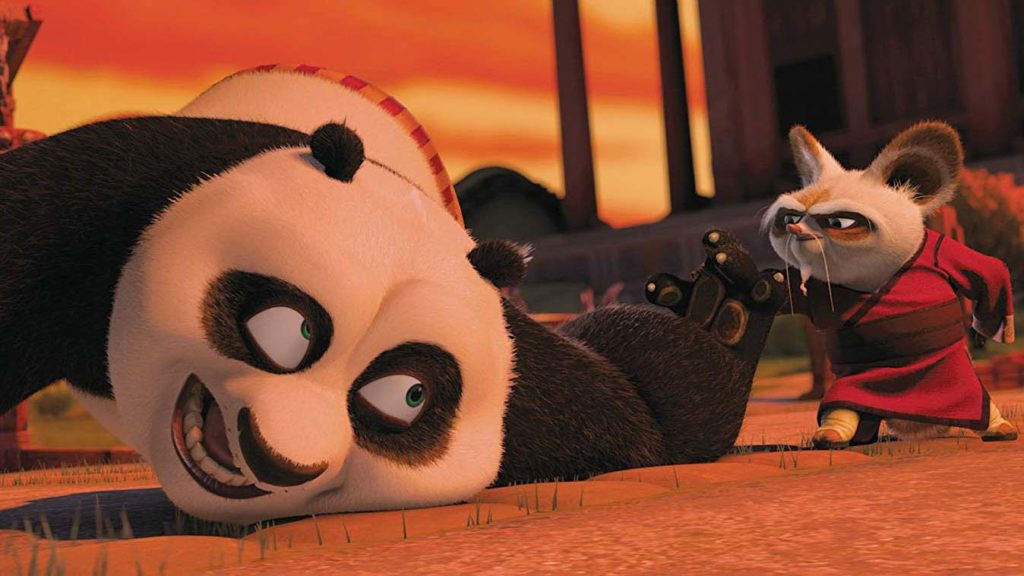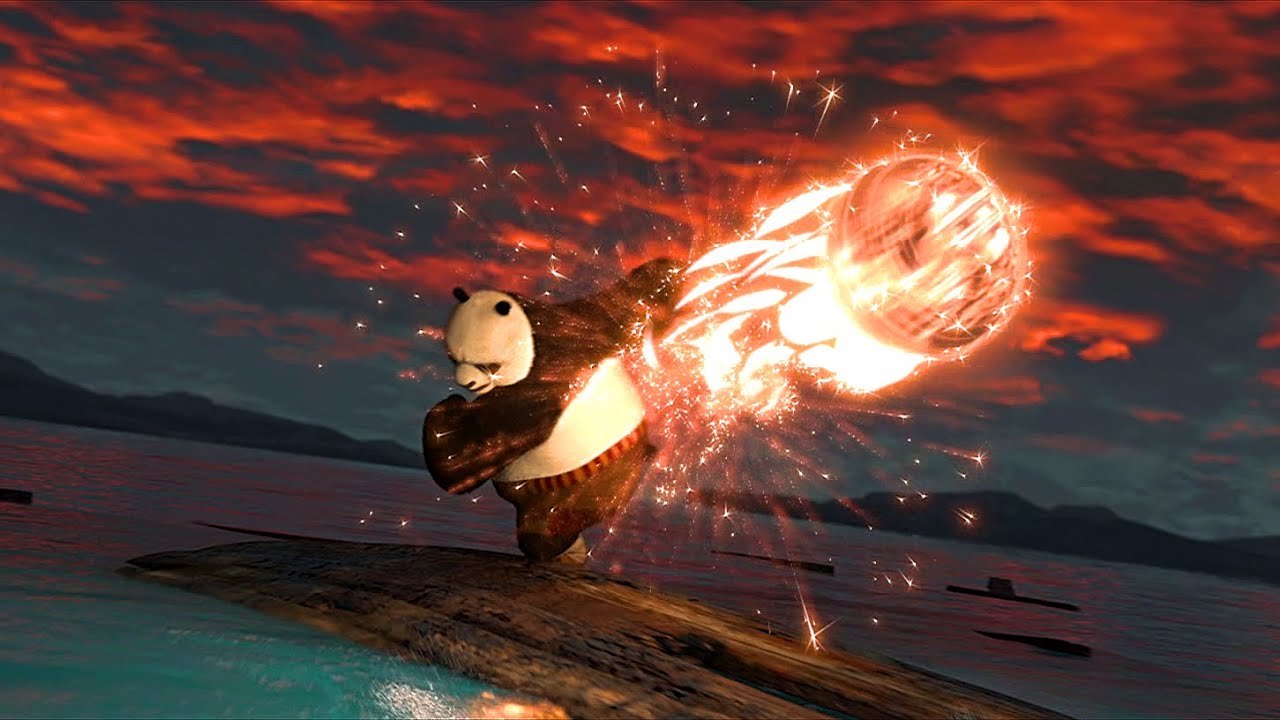

The face of theatrical animation in large part has been dominated by the Walt Disney Corporation. Aside from most of the 1980s, Disney has practically always been on top of the industry. Pixar was also a big name, but it was often working in tandem with Disney until it was straight up bought out by the larger company. In 2001 a new face made a big splash in the world of animation, DreamWorks. Despite releasing a handful of films beforehand, the studio wouldn’t see a mega hit on par with Disney until the 2001 release of Shrek. The company produced several films throughout the 2000s, many of which did well at the box office, but even the best received movies never hit the same critical heights as Disney. DreamWorks films were often seen as more childish, and not viewed as masterpieces the same way Disney’s biggest hits were.
In 2008, DreamWorks released Kung Fu Panda, and the marketing for the film seemed fairly typical, focusing a lot on the sillier, cruder humor that DreamWorks had been associated with. Many were skeptical over a martial arts film starring Jack Black as a talking panda. When the film released however, it was met with strong praise from both critics and audiences. Not only did people find it to be funny and entertaining for children, but many were impressed with the animation and choreography of its fight scenes, as well as its grasp of slightly more intense and nuanced themes compared to normal media aimed at children.
Part of this mastery comes from a real love of the genre. Despite some plans to make the film a more out-and-out comedy and spoof of martial arts films, but John Stevenson, the film’s co-director insisted that the film be more in line with tradition “wuxia”, or martial arts films while keeping a comedic tone in parts. The best homages are made with genuine respect and it’s clear that the filmmakers felt that in strides when making this movie. The team spent many years studying Chinese artwork, architecture, shadow puppetry, and many other cultural elements. The animators even took a kung fu class to have a sense of the way the characters should actually move and fight. This respect and attention to detail was lauded in China as well. In addition to performing very well financially, Chinese director Lu Chuan praised the film’s ingenuity and it’s genuine respect and regard for Chinese culture.


The film was also praised for its thematic and moral center. The core idea of the film is that “there is no secret ingredient” to being a master of something. There is no magical chosen one who is naturally gifted. A hero can come from anywhere, no matter how humble, as long as they are sincere, kind, and respectful. Po is a wonderfully endearing and likable character, and exemplifies the aforementioned theme perfectly. His genuine nature and sincerity makes him a nice contrast to many other animated protagonists who are defined by their snarky attitude and mean spirited nature. Additionally he doesn’t have the typical musclebound, action hero look, making him a much more relatable character, which is especially meaningful for children.
What’s even more impressive than creating such an outstanding film is being able to do it again, and even better the second time around. The sequel, Kung Fu Panda 2, which released in 2011 expanded upon the first film in nearly every way. With more advanced technology and more experience, the team was able to up the animation in a big way. The choreography and animation are more dynamic and fluid, and the cast continues to bring such a strong energy to the characters.
Where the film really shines through are the emotional moments. It delves into Po’s backstory and goes into surprisingly dark places. Before the events of the films, the evil Shen wiped out all the Pandas, for fear that they would pose a threat to his conquering ambitions. Po is forced to confront the one who slaughtered his kind and even loses his first confrontation with him. It isn’t until Po spends time on his own and further hones his martial arts that he stands a chance. However, his training isn’t about learning to punch harder or use some special move, it’s about learning to conquer one’s fears and one’s self before facing an opponent. This is a philosophy actually rooted in martial arts and in the final confrontation, Po mostly deflects and redirects Shen’s attacks rather than just punching him head on. In addition to being clever, it actually further advances Po’s character and abilities. So many sequels can feel like blatant rehashes but this is an actual evolution of the philosophies of the first film.


Kung Fu Panda 3 pushes the story further along once again. The new threat in this film, Kai, is spiritual in nature. In this film Po learns more about the spiritual side of martial arts, taking his teaching in a whole new direction. The real core of the story though is Po reconnecting with his birth father and the way he feels torn between the pandas and his adopted father, Mr. Ping the goose. This expands on the feelings of doubt he felt in the previous film, as well as provides another scenario where Po must learn more about who he is, and comes to accept both father figures in his life. Once again, this is very real situation that many children can find themselves in and seeing these types of characters reflected in a children’s film can do wonders for them.
The Kung Fu Panda trilogy has done what many trilogies fail to do, continue to be engaging and critically lauded. The films have been some of the biggest hits for DreamWorks and it once again proves that real drive and passion behind a project can create something truly wonderful. Despite their goofy exterior, these films balance compelling drama, breathtaking action, and good natured humor, all together coupled with a deep understanding and respect for actual martial arts and Chinese culture. DreamWorks has produced many successful and acclaimed films, but these stand as some of their best and will likely become classics for years and years to come.
